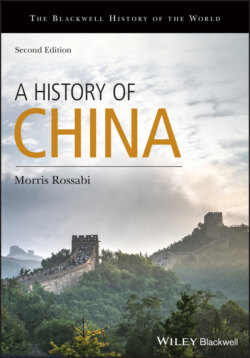Читать книгу A History of China - Morris Rossabi - Страница 21
ORACLE BONES
ОглавлениеKnowledge of the Shang has emerged not only from the era’s physical remains but also from oracle-bone inscriptions, of which about 100,000 pieces have survived. The Shang advanced beyond the Neolithic forms of scapulimancy in using turtle shells (generally female) along with cattle bones in divination and incising responses on the scapula, thus producing the first conscious Chinese writing. Workmen chiseled or bored holes in the bone or shell, and diviners applied heat and produced cracks, which were then interpreted. A craftsman, perhaps the same workman, recorded the circumstances surrounding the actual divination – the date and the name of the diviner (who, as the Shang progressed, was almost always the king) as well as its actual content. Divinations concerned potential military ventures and hunting expeditions, the harvests, sacrifices to the ancestors, and the weather and other natural phenomena.
Figure 1.3 Tortoise shell with divinatory text of the reign of Geng Ding, Shang dynasty, fourteenth/thirteenth century BCE. The Art Archive/Musée Guimet Paris/Gianni Dagli Orti.
The diviners sought responses from the ancestors and from Di (who was particularly identified with the Shang royal family), a deity who, along with the river, mountain, and wind gods, controlled the natural world as well as warfare, illness, and other human crises. The king’s interpretation of the cracks foretold the future. On occasion, the bones recorded the actual outcome, which most often confirmed the prognostication. The whole operation – the chiseling of holes, the proper creation of systematic cracks, and the recording of the divination – required enormous effort, time, and expertise, indicating divination’s value to Shang society.
The oracle bones afford glimpses of Shang society. Nearly every aspect of Shang culture, from agriculture to sickness to the interpretation of dreams, was addressed in these records of divination. Since the king himself, reflecting a theocratic system, was the principal diviner, the bones often convey the objectives and aspirations of the elite, as well as their spiritual views. However, Shang religions consisted of more than oracle bones. The bones themselves allude only to rituals, dances, music, and ceremonies, without providing additional details. Thus, they convey only a partial – though invaluable – view of Shang religion and society. Though the bones that have survived constitute less than ten percent of the total actually produced for divination, most specialists believe that they are representative in theme and subject matter of the rest. Some historians believe that the divination inscriptions provide a general picture of the elite’s worldviews; they also recognize that knowledge of Shang China will not, unless new remarkable sources are uncovered, achieve the same level of detail about rulers, the military, and the economy as exists regarding later dynasties.
